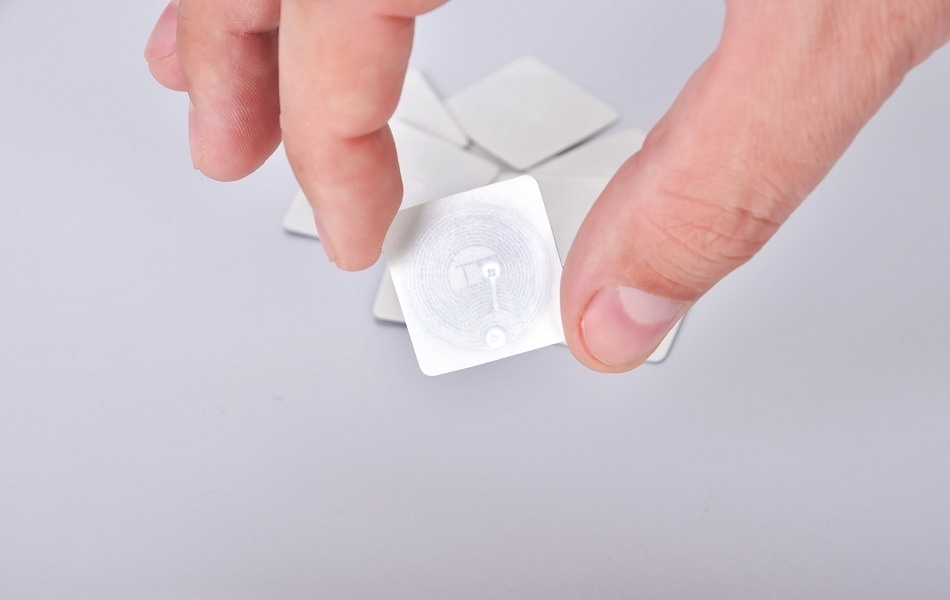Sensors are widely utilised in everyday life, with uses ranging from monitoring gas concentrations to recognizing faces. Sensors are also widely used throughout various industrial processes to detect and monitor various processes. Nanosensors work in the same way as conventional sensors, but the defining difference is that nanosensors use nanomaterials as their active sensing element.

Shutterstock | vetkit
How Nanosensors Work
There are two types of nanosensors – mechanical nanosensors and chemical nanosensors – which both have different sensing mechanisms.
Nanosensors that detect chemicals work by measuring the change in the electrical conductivity of the nanomaterial once an analyte has been detected. Many nanomaterials have a high electrical conductivity, which will reduce upon binding or adsorption of a molecule. It is this detectable change that is measured. 1D materials, such as nanowires and nanotubes, are excellent examples of chemical nanosensors, as their electrically confined structure can act as both the transducer and the electronic wires once an analyte has been detected.
Mechanical nanosensors also work by detecting a change in the electrical conductivity of a material. However, the mechanism for doing so is much different. Nanomaterials that are used as mechanical nanosensors change their electrical conductivity when the material is physically manipulated, and this physical change invokes a detectable response. This response can also be measured using an attached capacitor, where the physical change creates a measurable change in the capacitance.
Applications of Nanosensors
There are many different applications where the heightened sensitivity of nanosensors are useful. We discuss a few of these in some detail below.
Optical Nanosensin
Optical nanosensors have established themselves as an excellent sensing technique in biological applications. This is especially true in bioimaging, where the nanosensor can measure the fluorescence of a molecule with a high sensitivity. Optical nanosensors contain nanomaterials that have non-toxic receptors attached to the surface, so that optical changes within an environment can be detected. In addition to detecting fluorescence, optical nanosensors can also be used to monitor ion concentration, toxic levels within a cellular environment and to monitor any unwanted and interfering species.
Monitoring the Environment
Nanosensors have a great ability to monitor and analyze micro-organisms and toxic-chemical compounds found in environmental samples. Nanomaterials can be used to enhance the sensitivity of electrochemical sensors and ion-selective electrodes (ISEs), which are the conventional techniques used for the detection of trace amount of metals, nitrates, phosphates and pesticides in waterborne samples. Nanosensors also have the ability to measure in real-time, which is a highly valued property for environmental monitoring applications.
Light Sensing
Many applications focus on the detection of various molecules in a certain environment. However, nanosensors can also be used to detect electromagnetic radiation. One example is using zinc oxide nanorods, or zinc oxide nanowires, to detect UV radiation at low levels. Nanowires are often used in electromagnetic radiation sensing applications because they change their resistive state and invoke a measurable response to electromagnetic rays. Nanowires can also be used in parallel where the electrons cascade across all the nanowires and provide a quick and effective response.
Combining Nanosensors with Other Technologies
There is a growing trend of combining nanosensors with other useful technologies, such as microelectromechanical systems (MEMS) and microfluidic devices. Examples of where this has been useful include: depositing nanoparticles onto silicon substrates for more efficient chemical and gas sensing applications, gold nanowires in microfluidic devices to detect cholesterol in blood samples, using carbon nanotubes (CNTs) on silicon to detect harmful traces of ammonia, and in fluid-based MEMS devices to detect trace amounts of microorganisms in a fluidic sample.
Sources:
AZoNano: https://www.azonano.com/article.aspx?ArticleID=1840
Colorado State University: https://www.colostate.edu/
“Plasmonic Nanosensors: Review and Prospect”- Choi I., and Choi Y., IEEE JOURNAL OF SELECTED TOPICS IN QUANTUM ELECTRONICS, 2012, DOI: 10.1109/JSTQE.2011.2163386
“Nanosensors: a review of recent research”- Bogue R., Sensor Review, 2009, DOI: 10.1108/02602280910986539
“Nanosensor in Gas Monitoring: A Review”- Julkapli N. M. and Bagheri S., Nanotechnology in Environmental Science Chapter 14, 2018, DOI: 10.1002/9783527808854.ch14
“Optical nanosensors for detecting proteins and biomarkers in individual living cells”- Vo-Dinh T., Methods Mol. Biol., 2005, DOI: 10.1385/1-59259-858-7:383
“Optical nanosensors--an enabling technology for intracellular measurements”- Aylott J. W., Analyst, 2003, DOI: 10.1039/B302174M
“Chapter 4 – Optical Nanosensors for Biological Applications—Spectroscopic Techniques at the Cellular Level”- Cullum B. M. and Vo-Dinh T., Advanced Semiconductor and Organic Nano-Techniques, 2003, DOI: 10.1016/B978-012507060-7/50025-8
Disclaimer: The views expressed here are those of the author expressed in their private capacity and do not necessarily represent the views of AZoM.com Limited T/A AZoNetwork the owner and operator of this website. This disclaimer forms part of the Terms and conditions of use of this website.